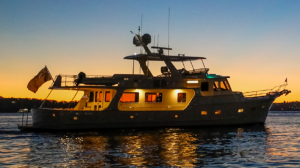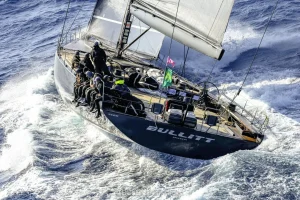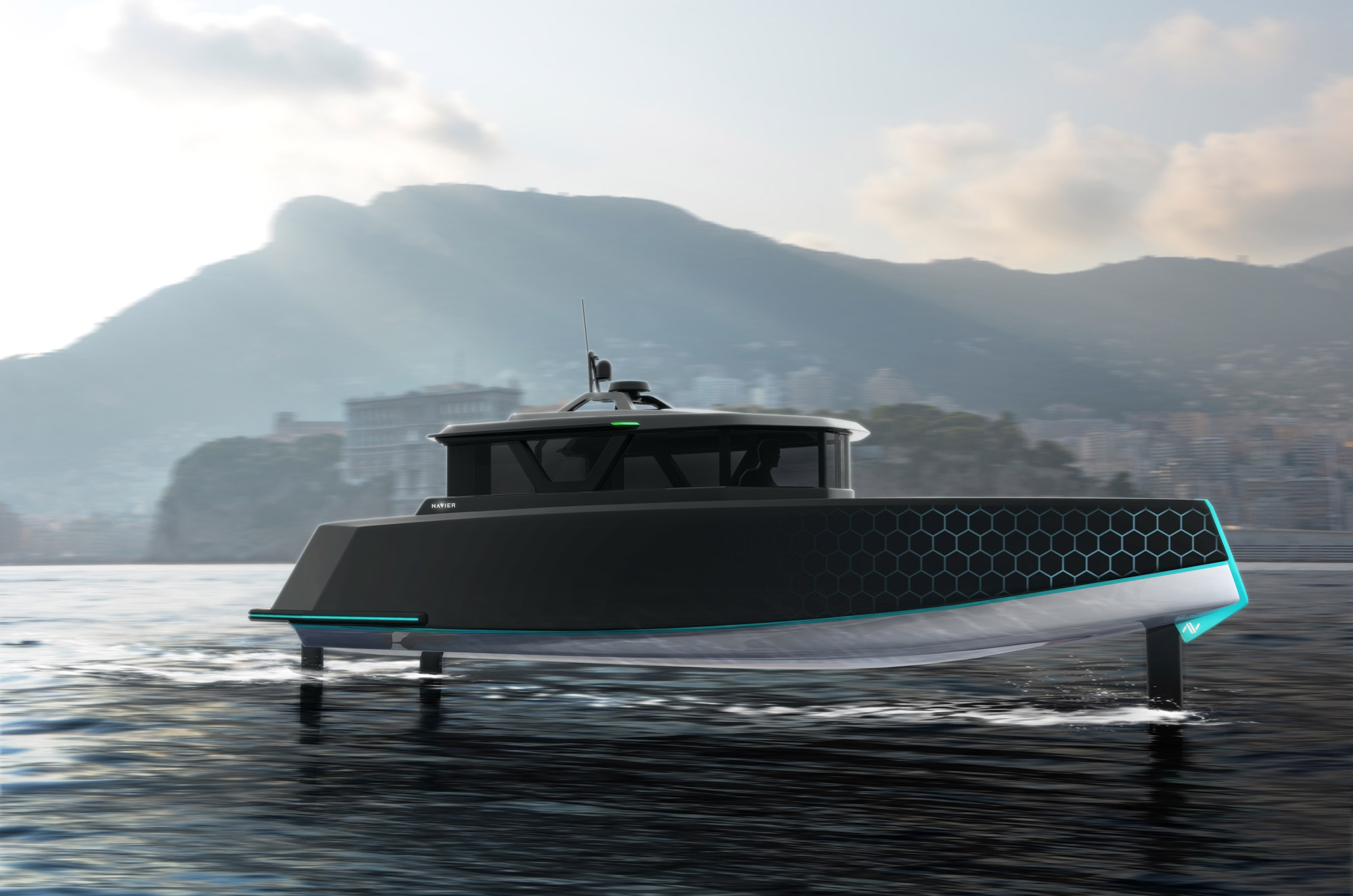
Islander Sailboats
Islander Sailboats are known for their remarkable design and construction, offering both a rich history and high-quality sailing experience. Each model showcases the attention to detail and craftsmanship that has become synonymous with the Islander brand. The company has produced a variety of sailboats throughout its history, each with unique specifications and variants catering to the diverse needs of sailing enthusiasts.
The sailing performance of Islander Sailboats has often been commended by their owners. Designed for both comfort and speed in mind, these vessels are well-regarded for their ease of operation and handling. Owning an Islander Sailboat is a matter of pride, adding a sense of heritage to the modern sailing experience.
Key Takeaways
- Islander Sailboats have a rich history, with distinct design and construction quality.
- These vessels offer diverse specifications and variants to cater to various sailing needs.
- Owners appreciate the comfortable sailing performance and ease of operation and handling.
History of Islander Yachts
Founding and Early Years
Islander Yachts was founded by boat designer and builder Joseph McGlasson in the early 1960s. McGlasson initially partnered with Glas Laminates, a boat manufacturing company, to produce the first Islander models. During this period, the company focused on designing and building high-quality fiberglass sailboats, starting with the popular Excalibur 26 designed by Alan Gurney. The brand quickly gained a reputation for its seaworthy and gracefully designed vessels.
Ownership Changes and Collaboration
Throughout its history, Islander Yachts underwent several changes in ownership and collaboration. In the late 1960s, Joseph McGlasson sold the company to Cosmodyne Inc., which continued the production of Islander boats. In the early 1980s, Islander Yachts became part of Metromedia International Group, which later spun off a new company, Wayfarer Yacht Corporation, to manage the islander sailboat line. Wayfarer Yacht Corporation collaborated with other boatbuilding companies such as Nordic Yachts and Mariner Yacht Company to design and build various Islander models.
One such collaboration took place with Actava Group which acquired Islander Yachts in the 1990s, focusing on producing custom and semi-custom sailboats. During this period, the company worked with various yacht designers, including James Antrim, Ben Kanter, and Ralph Brown, to create innovative and versatile sailboat designs.
Notable Models and Legacy
Islander Yachts produced several notable models throughout its history, such as the Islander 36, which became widely popular among sailors. The Islander 36 was a highly-regarded cruising yacht of its time, with a versatile design that allowed it to excel at coastal cruising, offshore passages, and even racing.
Here is a brief overview of some well-known Islander models:
- Excalibur 26: Designed by Alan Gurney, this model was the first sailboat produced by Islander Yachts and became popular for its seaworthy design, performance, and build quality.
- Islander 36: One of the most successful models in the company's history, this cruising yacht was known for its performance, versatility, and comfortable accommodations.
- Iona: A unique collaboration between Islander Yachts and designer James Antrim, the Iona featured an innovative design targeting bluewater cruisers and gained popularity due to its functionality and craftsmanship.
Though Islander Yachts is no longer in production, the company has left a lasting legacy in the sailing community. The designs and build quality of its boats are remembered and admired, providing inspiration for future generations of yacht designers and builders.
Design and Construction
Hull and Structure
The design of Islander sailboats, particularly the popular Islander 36, is focused on a combination of performance and durability. Built initially as wooden sailboats, they evolved into a fiberglass version to ensure low maintenance and longevity. The hull of an Islander sailboat is typically a monohull, with a hand-laid fiberglass construction providing excellent strength and rigidity.
These sailboats are characterized by a fin keel with lead ballast, which contributes to their stability and efficient sailing capabilities. The hull type is designed for ocean cruising and coastal exploration. The Islander boat has a standard beam and a draft that can vary depending on the keel configuration, with options such as a shoal draft keel for shallower waters.
Interior Layout and Features
The interior layout of an Islander sailboat is designed to provide comfortable accommodations for extended voyages. The main cabin features a table, sink, and a well-equipped galley, complete with an icebox and ample storage options. Sleeping areas include a v-berth in the forward section of the boat, and a quarter berth aft, offering comfortable sleeping quarters for both the captain and crew.
In addition to the berths, the cabin is furnished with settees on either side, which can also function as extra sleeping areas when needed. The main living area is designed to be spacious and inviting, ensuring that sailors can relax and enjoy their time on board.
Rigging and Sails
Islander sailboats are typically rigged as a sloop, with a single mast and two sails, including a mainsail and a jib. The choice of rigging for these boats allows for efficient and easy handling, even for single-handed sailors.
The sails of an Islander boat are constructed out of sturdy, high-quality materials capable of withstanding the elements. Sail area is designed to provide an optimal balance between power and ease of use, making these boats suitable for a range of sailing conditions.
Overall, the design and construction of Islander sailboats focus on providing a comfortable, efficient, and seaworthy vessel for sailors at all skill levels. Their durable fiberglass construction, practical interior layout, and easily managed sail plan ensure that they remain a popular choice in the world of sailing.
Specifications and Variants
Islander sailboats are known for their performance-oriented designs and quality construction. This section will focus on the specifications and variants of the popular Islander 36 model and provide a comparative analysis with other sailboats from similar manufacturers.
Islander 36 Detailed Specs
The Islander 36 is a classic sailboat that has been a popular choice for cruising and club racing since it was first introduced in the early 1970s. Its specifications include:
- Year: The Islander 36 was first introduced in 1971 and was produced until 1986.
- Length Overall (LOA): The total length of the boat measures 36 feet (10.97 meters).
- Length Water Line (LWL): The length of the boat at the waterline is 28.25 feet (8.61 meters).
- Beam (width): The width of the boat is 11.17 feet (3.40 meters).
- Displacement: The displacement of the Islander 36 is 13,450 pounds (6,100 kilograms).
- Ballast: The ballast of the boat is 5,825 pounds (2,641 kilograms), providing good stability.
- Fuel capacity: The fuel tank has a capacity of 32 gallons (121 liters).
The Islander 36 features a single-spreader masthead rig with a total sail area of 601 square feet. This design makes it easy for sailors to handle in various wind conditions. The boat's interior is comfortable and spacious, with accommodations for six people in three cabins.
Comparative Analysis
To provide a better understanding of the Islander 36's specifications, let's compare it to other sailboats from well-known manufacturers such as Columbia Yachts, Beneteau, and Newport Offshore Yachts.
| Model | LOA | LWL | Beam | Displacement | Ballast | Fuel capacity |
|---|---|---|---|---|---|---|
| Islander 36 | 36 ft | 28.25 ft | 11.17 ft | 13,450 lbs | 5,825 lbs | 32 gal |
| Columbia 36 | 35.75 ft | 27.75 ft | 10.17 ft | 13,500 lbs | 5,060 lbs | 35 gal |
| Beneteau Oceanis 361 | 36.5 ft | 30.5 ft | 12.5 ft | 12,790 lbs | 4,190 lbs | 20 gal |
| Newport 33 | 33 ft | 24 ft | 10.67 ft | 8,200 lbs | 3,200 lbs | 24 gal |
As the table shows, the Islander 36 has a longer waterline and a greater displacement and ballast when compared to the other sailboats. This indicates that the Islander 36 is a more stable and seaworthy boat. The fuel capacity of the Islander 36 is also larger than that of the Beneteau Oceanis 361 and Newport 33, providing more flexibility for those longer voyages.
In conclusion, the Islander 36 offers a good balance between performance and comfort, making it an ideal choice for cruising and club racing. Its specifications and quality construction have made it a classic among sailboats.
Sailing Performance
Cruising Capabilities
Islander Sailboats are well-known for their impressive cruising capabilities. As versatile sailboats, they cater to both novice and experienced sailors. One of the key factors affecting their performance is their sail area. Islander Sailboats generally have a generous sail area, allowing for better maneuverability and control, especially in light wind conditions.
These sailboats typically feature lead ballast, which contributes to their stability and safety when cruising. As a result, they are considered suitable for coastal cruising and can handle various sea conditions. Islander Sailboats are designed to offer a comfortable experience with spacious interiors and ample storage space for longer voyages.
Racing and Competitions
While Islander Sailboats may not be primarily designed for racing, they have shown decent performance in various competitions. Their balanced design and respectable speed make them contenders in both amateur and professional racing events.
Handling is an essential aspect of any racing sailboat, and Islander Sailboats are known for their responsive steering and easy maneuverability. This characteristic allows sailors to quickly adapt to changing wind conditions and maintain a competitive edge.
In summary, Islander Sailboats exhibit reliable sailing performance for both cruising and racing. Their generous sail area combined with lead ballast and responsive handling makes them versatile and enjoyable vessels in various sailing scenarios.
Owning an Islander
When it comes to owning an Islander sailboat, enthusiasts should be familiar with the aspects of market availability, maintenance, and customization, as well as the ownership experience. Islander Yachts, based in Costa Mesa, produced various types of sailboats, such as the popular I36.
Market Availability and Pricing
Islander sailboats can be found in various locations, including Costa Rica. To search for available boats, potential buyers may consult online marketplaces, local classifieds, or network with other owners through social media platforms and email lists. Pricing will vary depending on the length, model, and production year, as well as the condition and customization level of each specific vessel.
Maintenance and Upkeep
All sailboats require regular maintenance to ensure optimal performance. In general, owners should expect to maintain their Islanders according to industry standards for sailboats. This may include tasks like inspecting and replacing rigging, checking and repairing sails, maintaining the engine and electronics, and preserving the hull integrity. Identifying a nearby reliable service center or learning how to perform basic tasks can be highly beneficial for owners.
Restoration and Customization
Some Islander owners may opt to restore their sailboats, especially when working with older models. Restoration efforts can be significant, often involving complete hull and interior refurbishment, as well as updating the boat systems. Customization options, like upgrading the navigation system or adding personalized touches to the interiors, contribute to tailored ownership experiences.
Community and Ownership Experience
Islander sailboats often provide owners with a strong sense of community. Engaging with fellow Islander owners through social media, email lists, and in-person gatherings can prove invaluable in sharing knowledge, advice, and stories, ultimately enhancing the overall ownership experience. Enjoying the islander lifestyle is synonymous with the pleasure of navigating the sea with confidence and camaraderie.
Operation and Handling
Sailing Techniques and Best Practices
Islander Sailboats are popular among sailing enthusiasts for their performance and handling capabilities. To effectively operate and handle these sailboats, there are a few essential techniques and best practices to follow.
Trimming the sails: Proper sail trim is critical to obtaining optimal boat speed and stability. Adjust the sails according to the wind direction and intensity, ensuring they're not too tight or too loose. For upwind sailing, trim the sails closer to the boat, whereas for downwind sailing, loosen the sails and let them capture more wind.
Tacking and jibing: Mastering the art of tacking and jibing is essential for maneuvering the sailboat through changing wind directions. Tacking (changing direction by turning the bow through the wind) and jibing (changing direction by turning the stern through the wind) are key techniques for securing safe passage.
Balancing the boat: Maintaining balance while sailing an Islander Sailboat is crucial. Distributing weight evenly across the boat will ensure stability and enable smooth navigation.
Navigation and Safety
Safety should always be a top priority when operating an Islander Sailboat. Below are essential guidelines for navigation and safety precautions:
Check equipment and gear: Before setting sail, examine the sailboat's equipment and gear for possible damages or wear. Ensure that all safety gear, such as life jackets, flares, and fire extinguishers, are on board and easily accessible.
Monitor weather conditions: Continually be aware of weather forecasts and changing conditions. Be prepared to adjust your sailing plans if necessary to avoid adverse conditions.
Utilize navigation tools: Equip the sailboat with navigational tools such as charts, a compass, and a GPS device. Routinely update and cross-reference these tools to ensure accurate navigation.
Adhere to safety regulations: Follow all local and international safety regulations for sailboat operation. Some important recommendations include setting up clear communication procedures, handling emergencies, and implementing proper mooring practices.
By following these techniques and best practices, sailing enthusiasts can confidently navigate in an Islander Sailboat and enjoy a safe and enjoyable experience.
Frequently Asked Questions
What are the standout features of Islander performance boats?
Islander performance sailboats are known for their solid construction, reliable handling, and good balance between performance and comfort. They often feature a comfortable cruising layout with ample storage and living space, making them excellent choices for both weekend sailors and long-term liveaboards. The vessels typically have a fiberglass hull construction, ensuring durability and low maintenance requirements.
Which Islander sailboat models are most suitable for liveaboards?
For those seeking a liveaboard sailboat, the Islander 36 and Islander Freeport 41 are popular choices. The Islander 36 model is designed for comfortable cruising and is known for its spacious interior and functionality. The Islander Freeport 41 offers additional space, with a large aft cabin and expansive living area, suitable for extended voyages or living on board full-time.
How do Islander 36 sailboats perform according to reviews?
Many sailors and boat owners have shared their positive experiences with the Islander 36 sailboats. They particularly praise the boat's solid construction, ability to sail well in various conditions, and the aforementioned comfortable interior layout. The Islander 36 has gained a reputation for being a reliable and easy-to-maintain sailboat, suitable for both experienced sailors and beginners alike.
What are the typical price ranges for used Islander Freeport 41 sailboats?
The price range for a used Islander Freeport 41 sailboat can vary widely depending on factors such as age, overall condition, updates, and equipment. Generally, these boats can be found on the market for around $80,000 to $120,000. It's important to thoroughly inspect any used vessel before purchase and consider potential refit and maintenance costs.
What characteristics define Islander power boats compared to their sailboat counterparts?
While the majority of Islander boats are sailboats, they also produced a few powerboats models. These powerboats tend to be more focused on speed and performance and less on interior comfort and living space, compared to their sailboat counterparts. Like the sailboats, however, the Islander powerboats were built using fiberglass construction, ensuring durability and easy maintenance.
What is the history and background of the Islander sailboat manufacturer?
Islander sailboats were produced by the Islander Yachts corporation, based in Southern California. The company was founded in 1959 and initially created small sailboats. Over time, they expanded their range to include various models suitable for cruising, racing, and liveaboard purposes. Islander Yachts ceased operations in the early 1980s, but the legacy of their well-built and reliable sailboats continues to be appreciated by sailors and liveaboards alike.





















